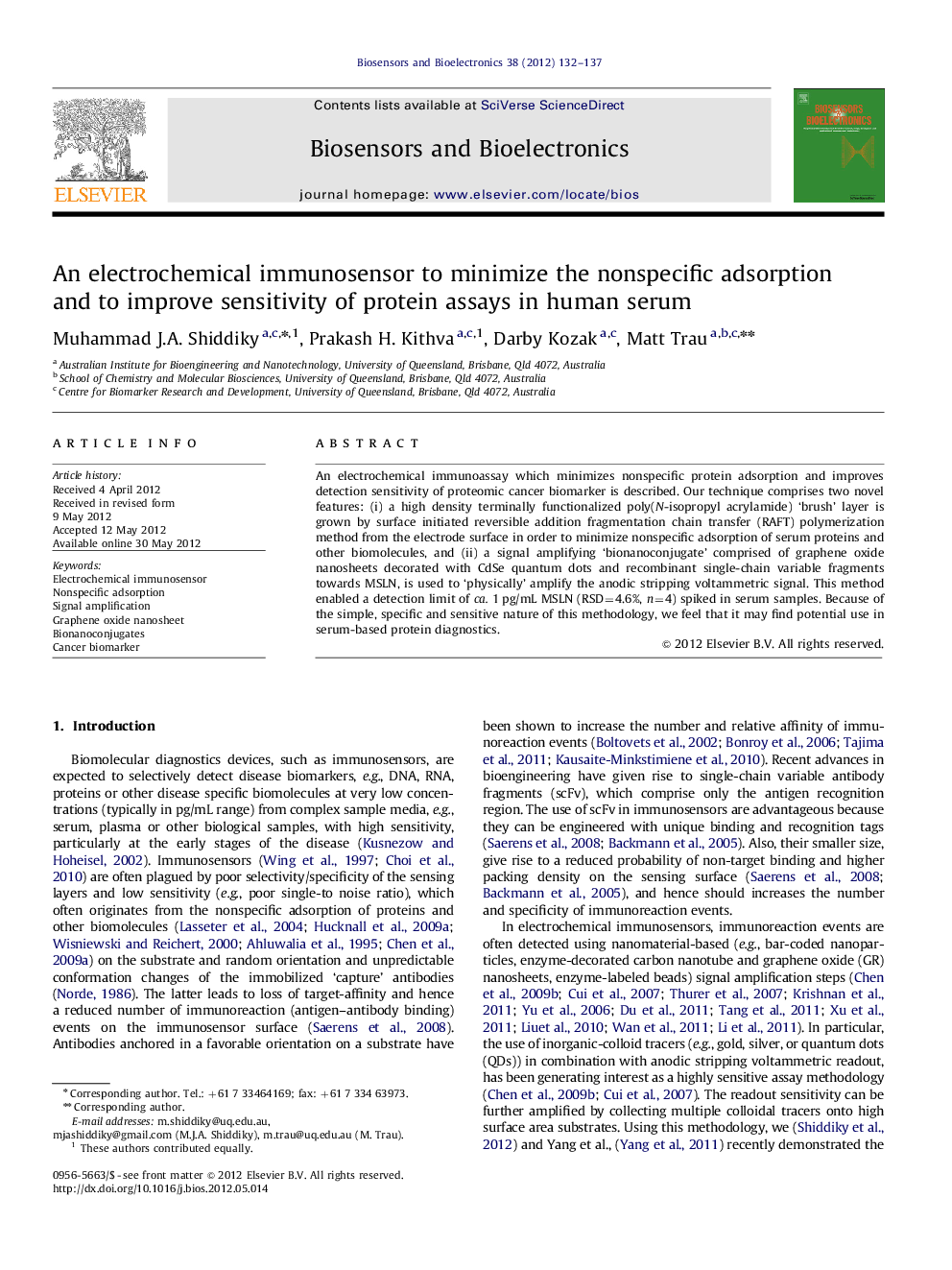| Article ID | Journal | Published Year | Pages | File Type |
|---|---|---|---|---|
| 867280 | Biosensors and Bioelectronics | 2012 | 6 Pages |
An electrochemical immunoassay which minimizes nonspecific protein adsorption and improves detection sensitivity of proteomic cancer biomarker is described. Our technique comprises two novel features: (i) a high density terminally functionalized poly(N-isopropyl acrylamide) ‘brush’ layer is grown by surface initiated reversible addition fragmentation chain transfer (RAFT) polymerization method from the electrode surface in order to minimize nonspecific adsorption of serum proteins and other biomolecules, and (ii) a signal amplifying ‘bionanoconjugate’ comprised of graphene oxide nanosheets decorated with CdSe quantum dots and recombinant single-chain variable fragments towards MSLN, is used to ‘physically’ amplify the anodic stripping voltammetric signal. This method enabled a detection limit of ca. 1 pg/mL MSLN (RSD=4.6%, n=4) spiked in serum samples. Because of the simple, specific and sensitive nature of this methodology, we feel that it may find potential use in serum-based protein diagnostics.
► This paper describes a method to minimize nonspecific adsorption of serum proteins.► A high density poly(N-isopropyl acrylamide) brush is employed as an antifouling layer.► This study also describes a method to improve sensitivity of electrochemical immunoassay.► A ‘bionanoconjugate’ comprised of 2D-GR nanosheet, CdSe QDs, and scFv of anti-MSLN is fabricated.► The scFv-MSLN/GR/QDs is used as an electroactive label in anodic stripping voltammetric readout.
